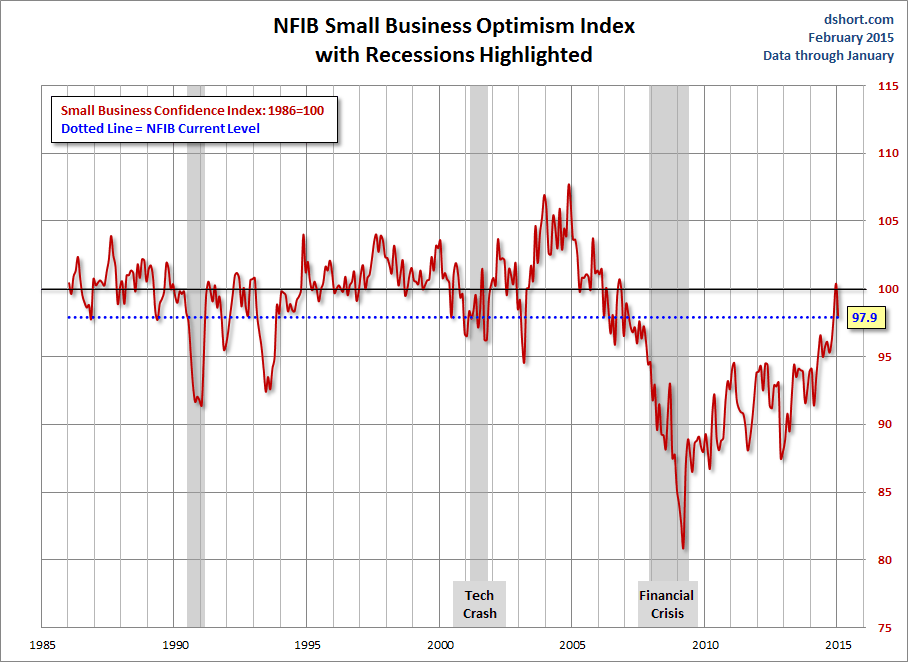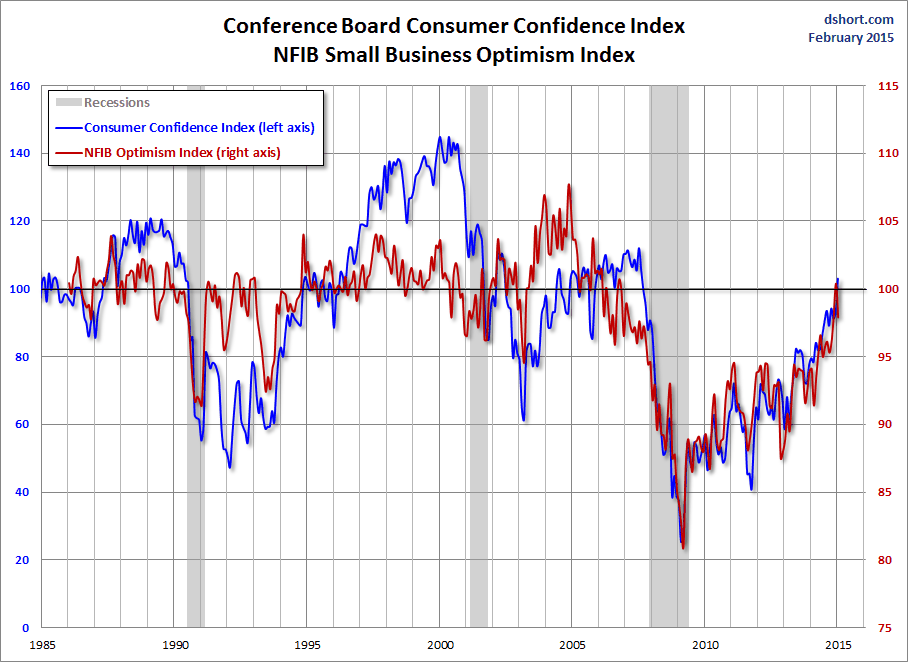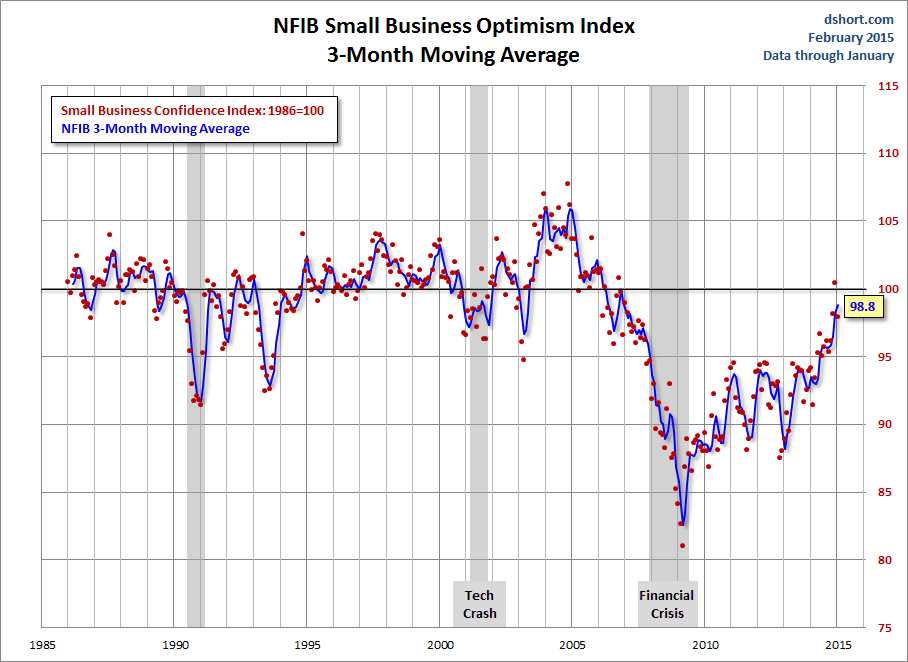The latest issue of the NFIB Small Business Economic Trends is out today. The February update for January came in at 97.9, down 2.5 points from the previous month. The index is now at the 36.1 percentile in this series.
The Investing.com forecast was for 101.3.
Here is the opening summary of the news release.
The Small Business Optimism Index fell 2.5 points to 97.9, giving back the December gain that took the Index over 100. Still, the Index indicates that the small business sector is operating in a somewhat “normal” zone. Seven components fell, one was unchange d and 2 rose a bit. Most of the decline was accounted for by expected business conditions (43 percent of the decline), expected real sales (14 percent) and earnings (14 percent). The good news was the increase in the percent of owners reporting hard to fill openings and the drop of only 1 point in the net percent of owners planning job creation from December’s very good number.
The first chart below highlights the 1986 baseline level of 100 and includes some labels to help us visualize that dramatic change in small-business sentiment that accompanied the Great Financial Crisis. Compare, for example the relative resilience of the index during the 2000-2003 collapse of the Tech Bubble with the far weaker readings of the past four years. The NBER declared June 2009 as the official end of the last recession.

The average monthly change in this indicator is 1.3 points. To smooth out the noise of volatility, here is a 3-month moving average of the Optimism Index along with the monthly values, shown as dots.
Here are some excerpts from the report:
Labor Markets
| The percent of owners reporting job creation fell 4 percentage points to a net 5 percent of owners, still a solid number. Thirteen percent report increasing employment an average of 3.1 workers while 8 percent reduced their workforce by an average of 3.2 workers. Forty-eight perce nt reported hiring or trying to hire (down 6 points), but 42 percent report ed few or no qualified applicants for the positions they were trying to fill. Fourteen percent reported using temporary workers, unchanged. Twenty-six percent of all owners reported job openings they could not fill in the current period, up 1 point and a very solid reading. |
Credit Markets
Has the Fed's zero interest rate policy and quantitative easing had a positive impact on Small Businesses?
| Four percent of owners reported that all their credit needs were not met, holding at the historic low. Thirty-two percent reported all credit needs met, and 52 percent explicitly said they did not want a loan. Only 2 percent reported that financing was their top business problem (1 point above the record low) compared to 21 percent citing taxes, 22 percent citing regulations and red tape and 13 percent citing weak sales. Eleven percent complained about the availability of qualified labor. |
NFIB Commentary
This month's "Commentary" section includes the following observations:
| In spite of the rather poor state of government economic policy, the private sector is managing to push ahead. GDP growth in Q4 was initial ly reported at 2.6 percent, revisions seem to be all positive these days. The data collection is running behind the economy. The revisions to November and December jobs numbers were absurdly large. Why investors pay attention is a mystery, the market just likes to bet on something. The acceleration in growth follows the Federal Reserve’s termination of the quantitative easing buying sprees. The Fed has taken interest rates down far enough to be more than attractive, but growth prospects (cash flow, profits) are only mediocre. Money isn’t cheap if it can’t be deployed profitably. Buying a trillion dollars of bonds doesn’t produce jobs, the Fed has proved that. And the “wealth effect” from higher stock and bond prices did little to move the economy. |
Business Optimism and Consumer Confidence
The next chart is an overlay of the Business Optimism Index and the Conference Board Consumer Confidence Index. The consumer measure is the more volatile of the two, so I've plotted it on a separate axis to give a better comparison of the volatility from the common baseline of 100.

These two measures of mood have been highly correlated since the early days of the Great Recession.
Which stock should you buy in your very next trade?
With valuations skyrocketing in 2024, many investors are uneasy putting more money into stocks. Unsure where to invest next? Get access to our proven portfolios and discover high-potential opportunities.
In 2024 alone, ProPicks AI identified 2 stocks that surged over 150%, 4 additional stocks that leaped over 30%, and 3 more that climbed over 25%. That's an impressive track record.
With portfolios tailored for Dow stocks, S&P stocks, Tech stocks, and Mid Cap stocks, you can explore various wealth-building strategies.

